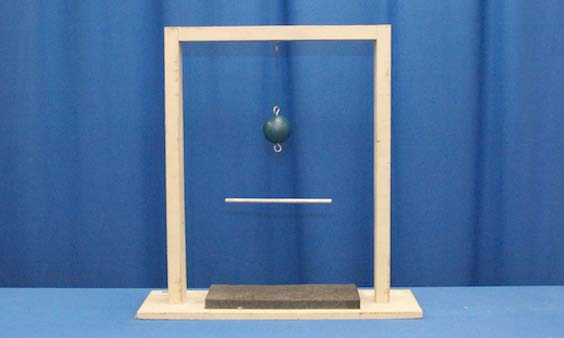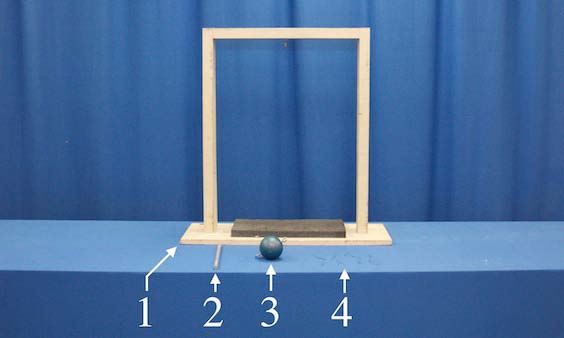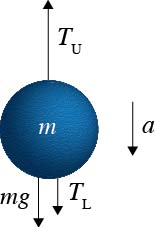


Concept

In the free-body diagram, let $T_L =$ lower string tension, $T_U =$ upper string tension. Choosing all forces and the acceleration downwards as positive, Newton’s Law gives:
$$\begin{align*} T_L + mg − T_U &= ma \\ \\ \frac{T_L − T_U}{m} &=a−g \end{align*}$$
We thus have three cases, each distinguished by how the resulting acceleration compares to $g$:
- $T_L< T_U$, so $a < g$ and the upper string breaks
- $T_L= T_U$, so $a = g$ and the two strings break simultaneously (heretofore unobserved)
- $T_L > T_U$, so $a > g$ and the lower string breaks
Note that a quick jerk on a full roll of toilet paper provides a similar result.
Procedure
- Place the bar through the bottom loop of the string hanging from the ball.
- Hold each end of the bar making sure your hands are not directly below the iron ball.
- Poll the class as to which string will break as the result of a very slow pull.
- Pull the bar down very slowly.
- Notice the upper string breaks and the ball falls.
- Replace the broken string with one of the provided extra strings.
- Repeat steps 1-2, but this time jerk the bar down quickly.
- Notice that the lower string breaks and the ball remains suspended.
Equipment
- Suspension Platform
- 30 cm Bar
- Iron Ball with Hooks
- (4) 6 inch End-Loop String